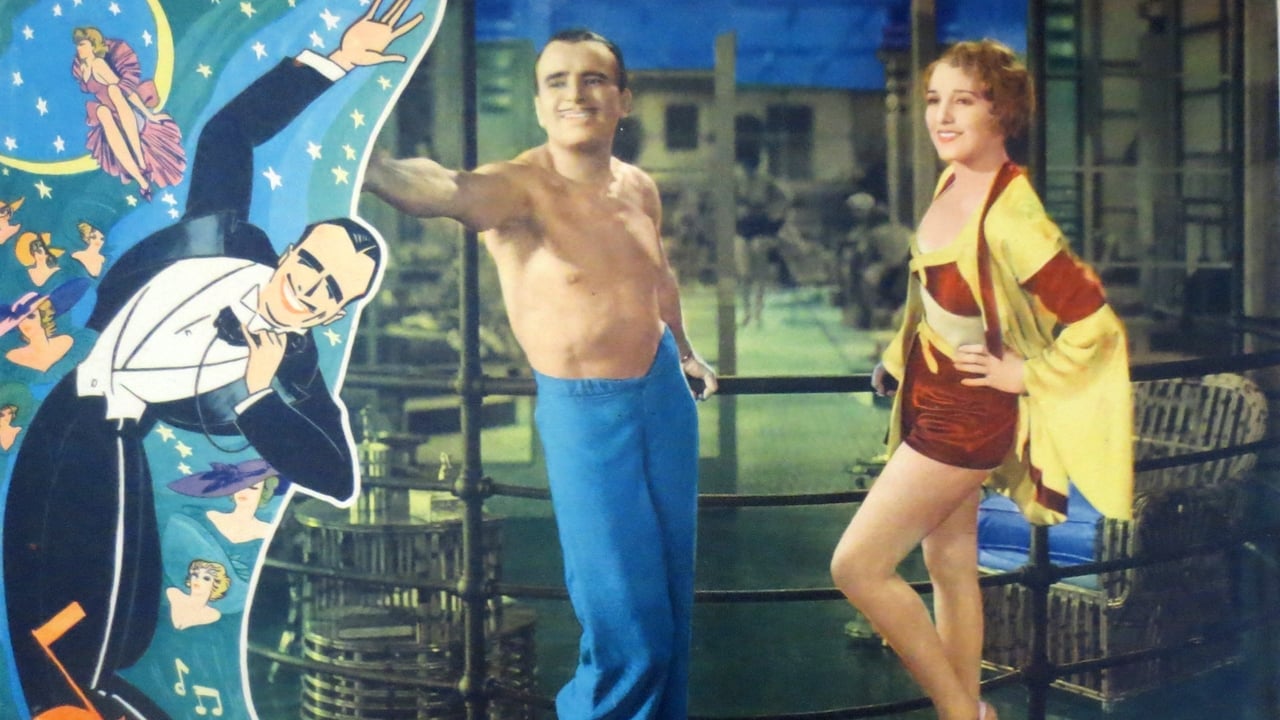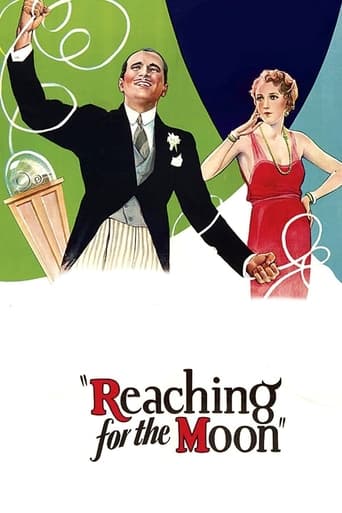Interesteg
What makes it different from others?
ChanFamous
I wanted to like it more than I actually did... But much of the humor totally escaped me and I walked out only mildly impressed.
Keeley Coleman
The thing I enjoyed most about the film is the fact that it doesn't shy away from being a super-sized-cliche;
Guillelmina
The film's masterful storytelling did its job. The message was clear. No need to overdo.
MissSimonetta
While it is a shame Douglas Fairbanks' career fizzled out with the advent of sound, when you watch something like Reaching for the Moon (1930) it isn't hard to see why that was the case. It has nothing to do with Fairbanks' voice or line delivery or any lack of charm on his part-- it's the material that frankly bites. Reaching for the Moon began life as a musical, but the waning popularity of the musical at the ox office made the suits panic and scrap all but one of the numbers before release. The meddling shows in the choppy rhythm of the picture. This single number retained, "When the Folks High Up Do the Big Low-Down," is the highlight of the movie, the one scene with great energy and fun. Everything else lacks pacing, the characters are one-note and boring. Fairbanks and Bebe Daniels are good performers, but they have no chemistry and have to deal with a dog of a script. It's a real shame.
calvinnme
This movie was supposed to be a musical, but by 1930 audiences had tired of at least the "All Singing" part of "All Talking, All Singing, All Dancing" movies. Virtually everyone's first talking picture was a musical, and there just wasn't enough good music to go around. Theaters were even putting up signs in the cases of movies that sounded like they might be musicals with statements that read "This is not a musical" so as not to repel audiences. This situation lasted until 1933.In this case, the movie probably would have been much better if it had gone through with the originally planned musical format. The introductory titles show that the music was written by Irving Berlin, and the cast even includes crooner Bing Crosby, who was so good in "The King of Jazz" that came out that same year. Instead, there is only one musical number two-thirds of the way into the film, and that is the only place we get to see or hear Bing Crosby. On top of that, Bebe Daniels, the lead actress, was a much better singer than she was an actress. Thus making this a romantic comedy of sorts really took away from all that she could have brought to the movie.What you're left with is a little bit more than a shell of a movie. It seems like nobody bothered to fill in the blanks left by the depletion of the would-have-been musical numbers. I give this movie six stars instead of five mainly because of the historical value. Douglas Fairbanks would make only two more movies after this one. Someone else has already mentioned the factor his voice played in the end of his talkie career. It is worth mentioning that his voice isn't outright bad, but it just doesn't match the swashbuckling image he had developed during the silent era. It's a higher pitch than what you're expecting. It is great fun to see him doing some of his trademark acrobatic moves during the film, and it's hard to believe a man of almost 50 could still be so agile and have such a youthful and vigorous appearance. Particularly entertaining is Edward Everett Horton as the valet. He had a good career in silent films, but he would do even better as a character actor in the age of talking pictures where dialogue really allowed him to shine as a well-meaning if somewhat befuddled character in a myriad of films. Also, various sets in the film show off some fine and interesting examples of 1930 architecture, and it is interesting to see how the early stages of the depression were interpreted by people at the time. In 1930 the stock market sell-off is still portrayed as a "panic" and a temporary set-back that has merely bankrupted a few high-rolling financiers.
Snow Leopard
A dated but mostly pleasant comedy, "Reaching For the Moon" has a lightweight story that is carried by its stars, Douglas Fairbanks (in one of his few sound pictures) and Bebe Daniels. Fairbanks is Larry Day, a financial genius with very little social life. He becomes enchanted with Vivien Benton (Daniels), to the point where he abandons his business concerns - endangering his financial empire - to follow her on an ocean liner. Edward Everett Horton is entertaining as the valet who tries to help Day learn how to approach a beautiful woman. While dated in several respects, it is a good-natured story that moves at an agreeable pace, and it also features a singing appearance by a very young Bing Crosby. There is not a lot of depth to the movie, but it is a decent way to pass the time for anyone who enjoys vintage comedies.
David Atfield
Looking at this film it is impossible to understand why Douglas Fairbanks never made it as a talkie actor. He really is splendid as a high-flying businessman who gives it all up for love. Energy to burn and still striking to look at (at 48 years old - he even has a shirtless scene) his star presence is undiminished by words. But the words are actually pretty good - the film is based on an Irving Berlin musical, but only one song remains (and that is sung for no apparent reason in the middle of the film, by a baby-faced Bing Crosby.)Also good is Bebe Daniels as an aviatrix and especially fine is Edward Everett Horton as Fairbanks' valet. Their rapport and obvious affection for one another is very touching and provides for some great comic moments.And the art deco sets are to die for!

